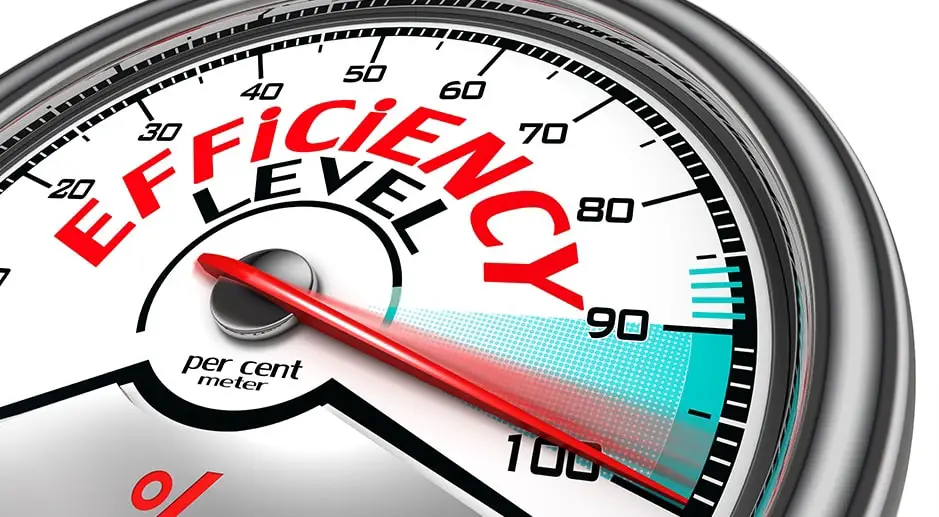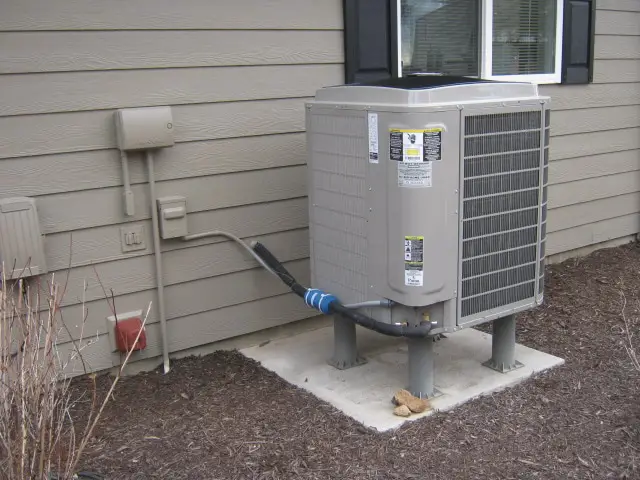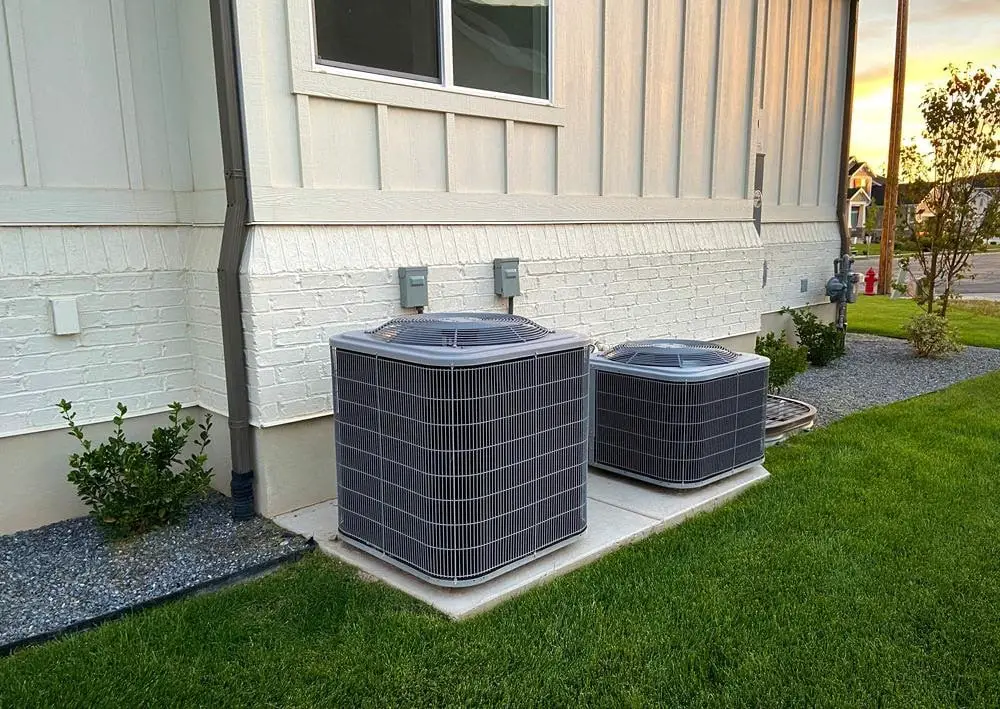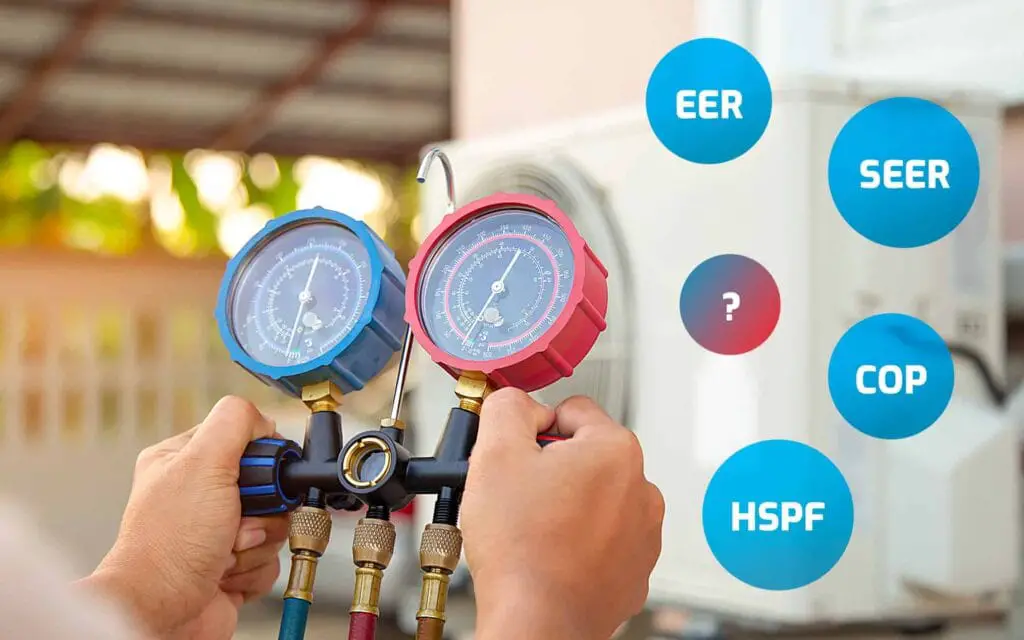A typical household accounts for about 48 percent of energy in heating and cooling. That’s a significant amount of energy consumption by a single appliance. As a result, it’s critical to pay close attention to energy efficiency ratings when shopping for a new heat pump.

But, how do you check a heat pump’s heating efficiency? The Heating Seasonal Performance Factor or HSPF should guide you. The HSPF rating is today the standard measure for a heat pumps’ potential to save energy and determine its impact on the environment.
This article discusses the HSPF rating in detail and why it’s an essential consideration in heating efficiency.
What is the HSPF Rating?
HSPF is a heat pumps’ total heat output plus the supplemental electric heat over a typical heating season in BTUs, compared to total electricity consumption in watt-hour over the same period.
Just as SEER measures cooling efficiency in heat pumps, HSPF measures heating efficiency in the same.
What Does HSPF Stand For?
HSPF is an acronym for Heating Seasonal Performance Factor, commonly referred to by many as HSPF rating when talking about heating and cooling systems.
Who Developed HSPF?
HSPF was developed by the Air Conditioning, Heating, and Refrigeration Institute (AHRI) in 1973 due to an oil crisis to help users determine energy consumption and efficiency in heat pumps.
In 1975, an enactment of the Energy Policy and Conservation Act (EPCA) came into action, thus helping advance lower energy consumption in HVAC systems.
Subsequent amendments granted the Department of Energy (DOE) the powers to devise national energy efficiency standards across many appliances, which led to HSPF rating in heat pumps used to date.

What Factors Are Considered in Calculating HSPF?
Calculating HSPF is based on two factors:
- the total heating energy in BTUs over a particular heating period
- the total energy in watt-hour used by the heat pump during a heating season for the same period
Why Does the HSPF Rating Matter When Choosing a Heat Pump?
A heat pump’s HSPF ratings indicate how effective the equipment performs in terms of the operating costs and the impact on the environment.
While it’s true that the higher the HSPF rating, the better, other factors, including your home ductwork and the unit’s installation, will determine how best the heating system performs, hence the necessity to know what HSPF rating to pair with other HVAC components.
The minimum federal requirement is 7.7 in the US, but a good rating should be at least 8.5—the least required to earn the Energy Star label in mini-split heating systems and 8.2 for the single-phase heat pumps.

How is the HSPF Rating Calculated?
To calculate the HSPF, take the total amount of heat required over a heating season in British Thermal Units (BTUs), and divide by the total electricity consumed in watt-hour over the same period.
For example, if you spend 10,000 Kwh on heating a 500 sq. ft room for three months and 8,000,000 BTUs heating effect produced by the heat pump over the same period, we would use the below equation to find the HSPF rating.
HSPF = Heating Effect (BTU) / Electricity Spent (Wh)
And using watt-hour and not kilowatt-hour, the conversion should be: 1 kWh = 1,000 Wh.
So the HSPF rating would be: HSPF = 8,000,000 / 1,000,000 = 8.
In essence, the HSPF rating of that heat pump is 8.
Ideally, you should aim for a heat pump with an eight or higher BTU/watt-hour ratio. That’s because eight is considered a magic number for energy efficiency for one to get a federal tax credit.
How Are HSPF and BTU Related?
Heating Seasonal Performance Factor or HSPF is the measurement of the efficiency of a heat pump in using electricity to capture heat in British Thermal Units (BTUs) and bring it into the home during a cold season.

So basically, HSPF is solely used to measure the amount of heat quantified in BTUs.
What is a Good HSPF Rating for Heat Pumps?
As a rule of thumb, the highest HSPF rating is considered the best if you can afford it. While 7.7 is the minimum rating as per the US federal laws on heat pumps heating efficiency, 8.2 to 8.5 is always a good rating minimum to earn an Energy Star label.
However, if you can afford the highest HSPF rating of 10 and above, the most eco-friendly, the better but, if cost-effectiveness is your ultimate goal in a heat pump, then matching a heat pumps’ HSPF rating to the area climate makes perfect sense.

How Much Energy Can You Save With a Higher HSPF?
Heat pumps have HSPF ratings as low as 7.7 and as high as 13. While the higher is the most efficient in saving energy, to understand precisely how much you can save, we’ll use an example of two different HSPF ratings.
Using two HSPF ratings of 8 and 9, we’ll need to convert them into percentages by dividing each figure by 3.414—the BTUs in a single kWh of electricity.
So, 8 /3.414 = 2.3 (230 percent) and 9 /3.414 = 2.6 (260 percent).
In that case, a heat pump with 8 HSPF rating outputs 2.55 times the amount of BTUs more than the energy consumed, while a 9 HSPF heat pump outputs 2.60 of BTUs more than the energy it consumes.
The difference in energy efficiency is now (260-230), making a heat pump with 9 HSPF ratings more efficient by up to 30 percent.
How is HSPF Related?
HSPF has a close relationship with other HVAC parameters that determine the heating or cooling efficiency of HVAC appliances, such as the ones discussed below.
HSPF and COP
HSPF is short for Heating Seasonal Performance Factor, whereas COP is an acronym for Coefficient of Performance.
COP measures the amount of heat moved versus electricity amount consumed. To find the number, we take the heat pumps HSPF and multiply by .393, which is the number we get using the below equation for COP:
Avg COP = Heat transferred / electrical energy supplied
Hence, Avg COP = (HSPF x 1055.056 J/BTUs) / (3600 J/watt-hour) = 0.293 HSPF
J is a measurement of heat denoting Joules.
Space heaters use electric resistance heat and have a COP of 1. The space heater has heat produced to electricity ratio of 1:1. The HSPF rating for the space heater is 3.14
Therefore, a heat pump with an HSPF rating of 8 moves up to 3.14 times the energy as the electricity it uses.
HSPF and SEER

HSPF or Heating Seasonal Performance Factor is used to calculate a heat pump’s heating efficiency, while SEER is short for Seasonal Energy Efficiency Ratio, used to measure an air conditioner or heat pump’s cooling efficiency.
While HSPF is exclusive to spatial heating using heat pumps, specifically air-source heat pumps, SEER applies to both air conditioners and heat pumps used for spatial cooling. For a more detailed comparison, see our guide on HSPF vs SEER.
HSPF and Climate Zones
The choice of heat pumps’ HSPF rating goes in hand with the climate zone where you intend to use it. The more extreme the climate, the higher a heat pump HSPF should be.
When making a heat pump choice, the best recommendation is pairing the HSPF rating relative to the climate zone.
A heat pump with a high heating efficiency is expensive on the upfront acquisition.
So, for instance, if you live in an area with mild temperatures where a heat pump with an 8 HSPF rating will heat efficiently and still save more, it is pointless to go for a 9 to 13.0 HSPF heat pump that will cost more to acquire but will make no significant difference in efficiency.
Conclusion
The higher the HSPF rating is always the best since you save more on energy bills. However, it goes beyond that if your ultimate goal is shopping for the most cost-effective heat pump possible.
Go deeper and consider factors such as your area’s climate zone. Pairing a heat pump’s HSPF rating with the relative area climate saves more on the upfront unit acquisition and long-term operation.
Avoid an overrated HSPF when you live in an area with milder climates. Instead, optimize heating efficiency by improving other HVAC components such as your home ductwork and ensure proper unit installation.

People Also Ask
More people still confuse how HSPF ratings work and their impact on a home’s heating expenses. Below are the two most commonly asked questions about HSPF ratings.
A higher HSPF rating is always the best if you can afford it. Such a heat pump is always eco-friendly and highly efficient in terms of energy consumption.
However, if you’re looking to save more on both the initial acquisition cost and monthly energy bills, consult an HVAC expert for advice on what HSPF pairs perfectly with your region’s climate zone.
Your choice of an HSPF rating affects the electricity bill by a significant amount. For instance, a heat pump with a 9 HSPF rating is up to 30 percent more energy efficient than one with 8 HSPF ratings.
